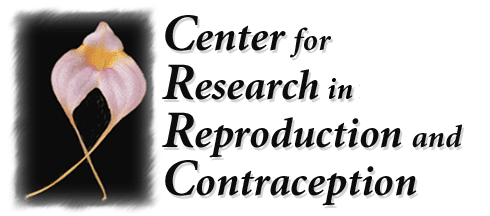|
|
||
|
Home
|
About the Center
"...to understand the basic biology of the male reproductive system
Mission
History Now, more than 30 years later and under the leadership of Dr. Bremner, the CRRC continues its earlier goal of focusing on male reproduction, implementing technical approaches that harvest the cutting edge of genome sciences, biophysics, and clinical investigation. The projects funded under the aegis of the center range from studies of the molecular physiology of the brain and testis to clinical trials of new contraceptive agents in men. Project investigators are broadly trained individuals, drawn from many disciplines, including biochemistry, biophysics, cell biology, clinical medicine, genetics, molecular biology, neurobiology, pharmacology, and physiology. We count among the members of our center program junior and senior faculty as well as basic scientists and clinical investigators. Together, we meet often for seminars and to share ideas and technology so that we may achieve our common goals. Since the initial founding of the University of Washington Population Center, now the CRRC, we have been extremely successful in attracting the very best young scientists, both in clinical investigation directly related to male contraceptive development and in basic science with true potential for application to contraceptive development and male reproductive health. The program has also been successful in attracting world leaders in clinical and basic sciences to be mentors for the postdoctoral fellows. These mentors, in addition to being internationally recognized investigators, have a very strong commitment to the application of their work to help in the solution of the world's problem of explosive population growth.
Funding The Future
|
|
|
|
||
|
Center for Research in Reproduction and
Contraception Phone 206.616.1818 - Fax 206.616.0499 University of Washington - Box 357138 pgarcia@u.washington.edu Seattle, WA 98195-7138 http://depts.washington.edu/popctr |
||
CRRC Home page |
||
